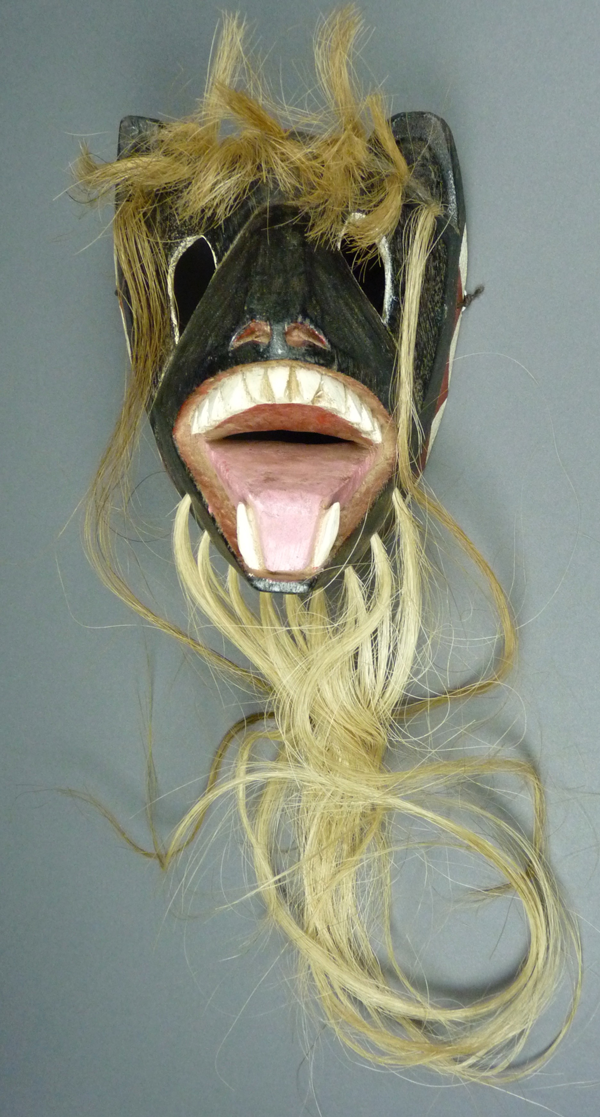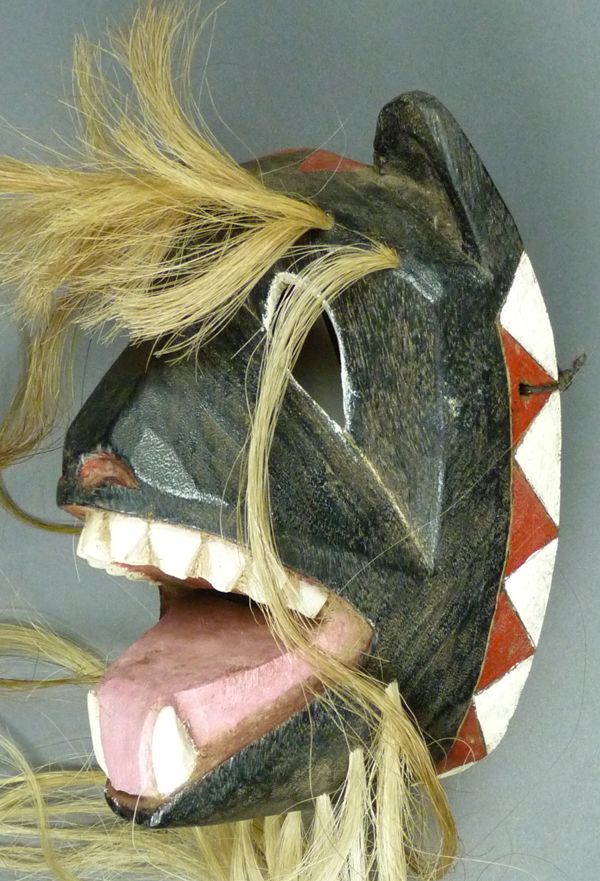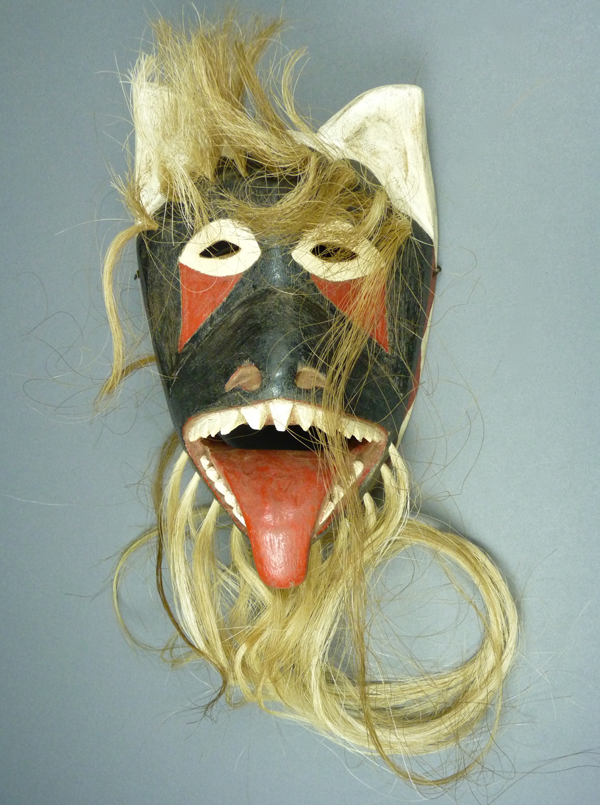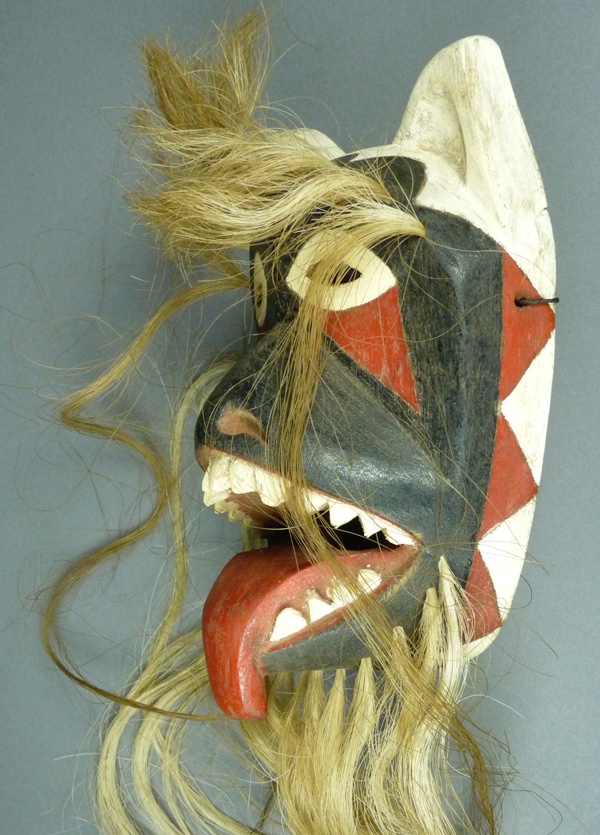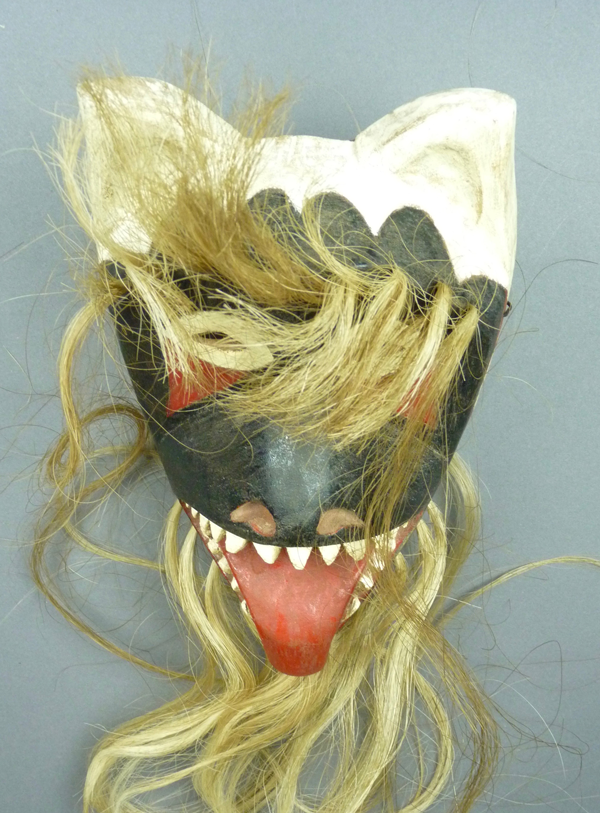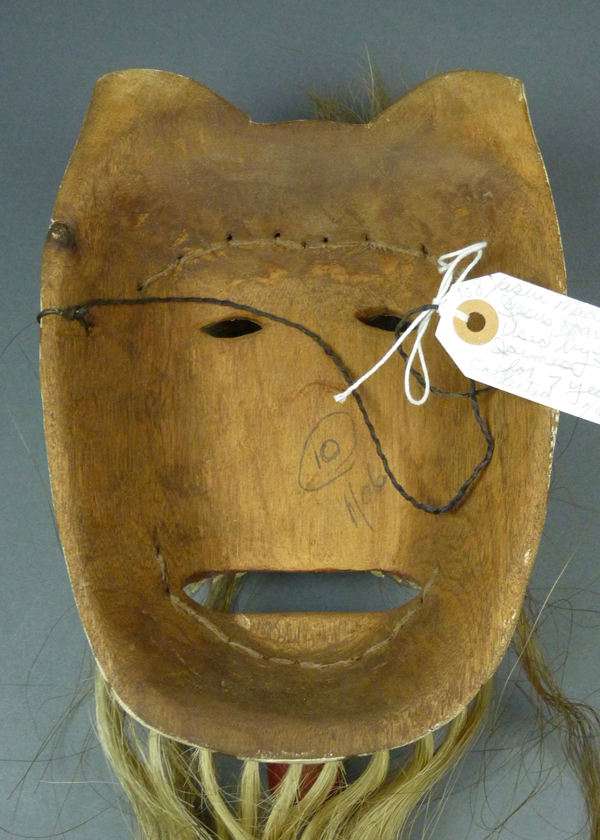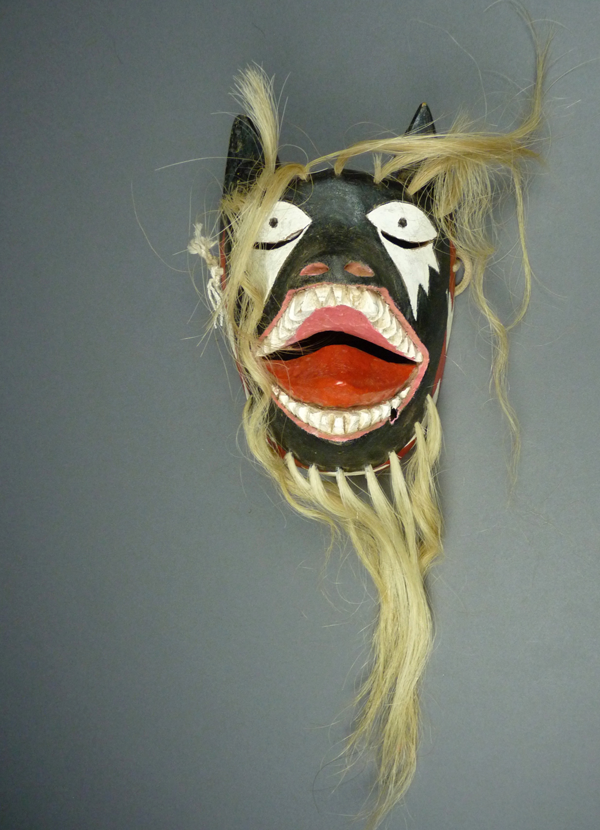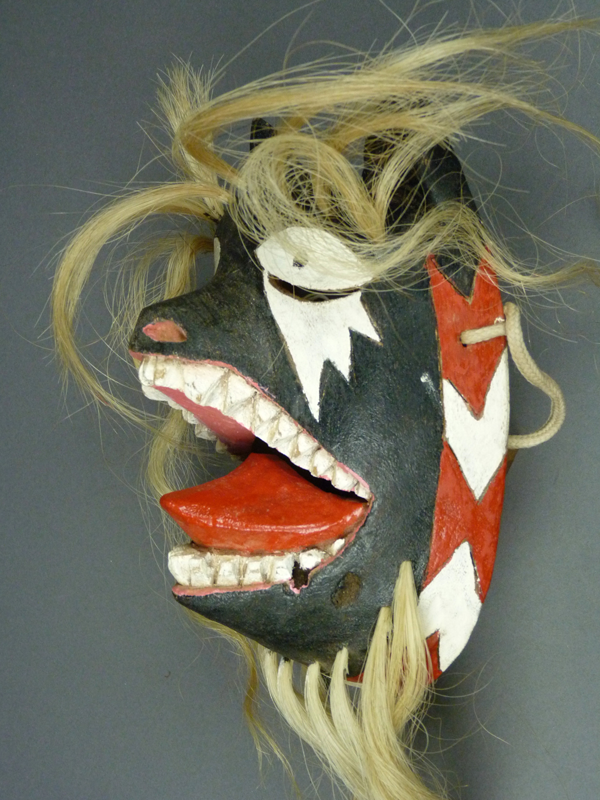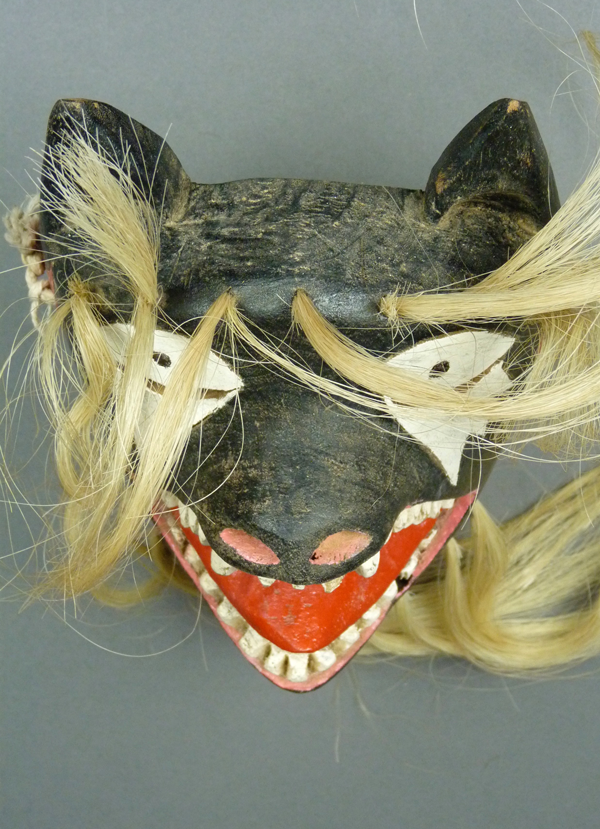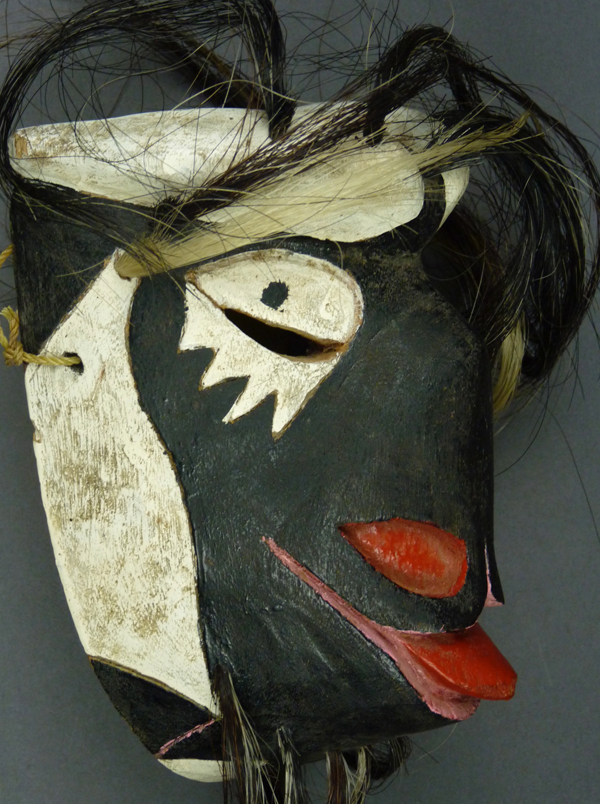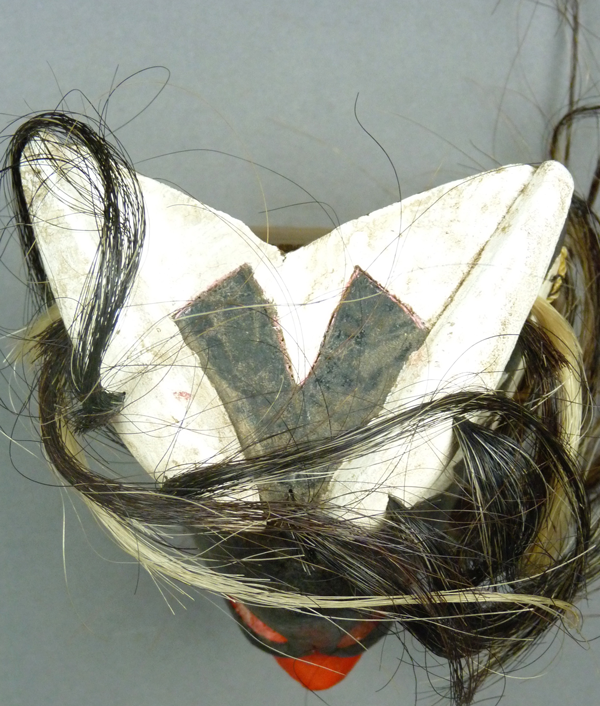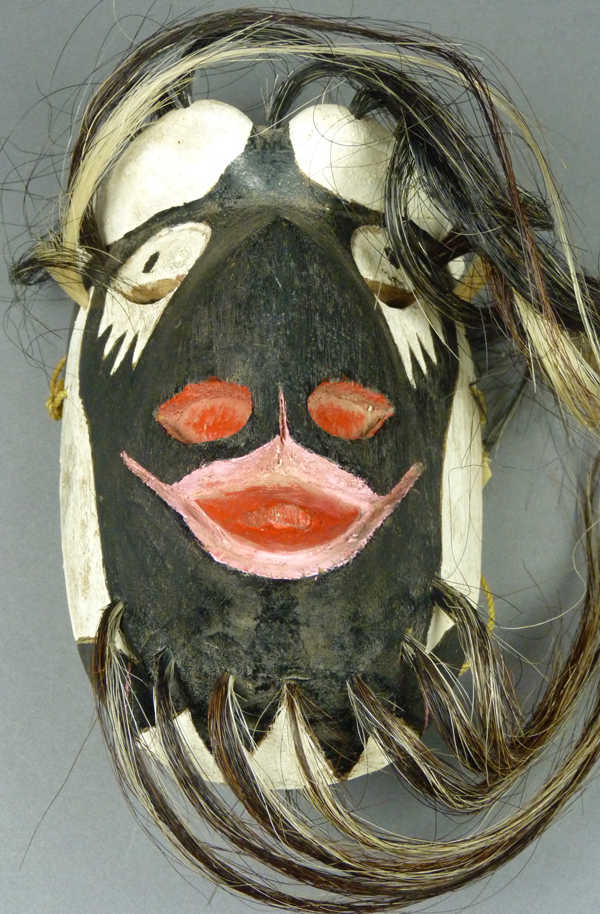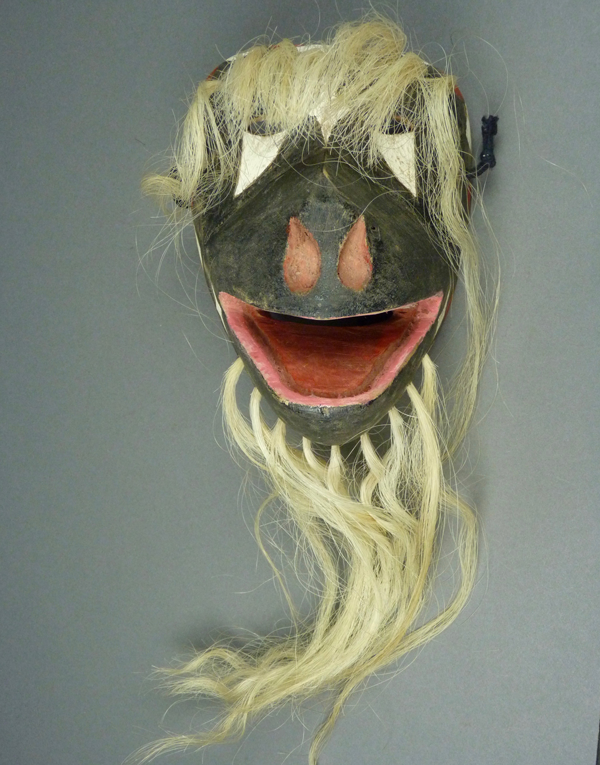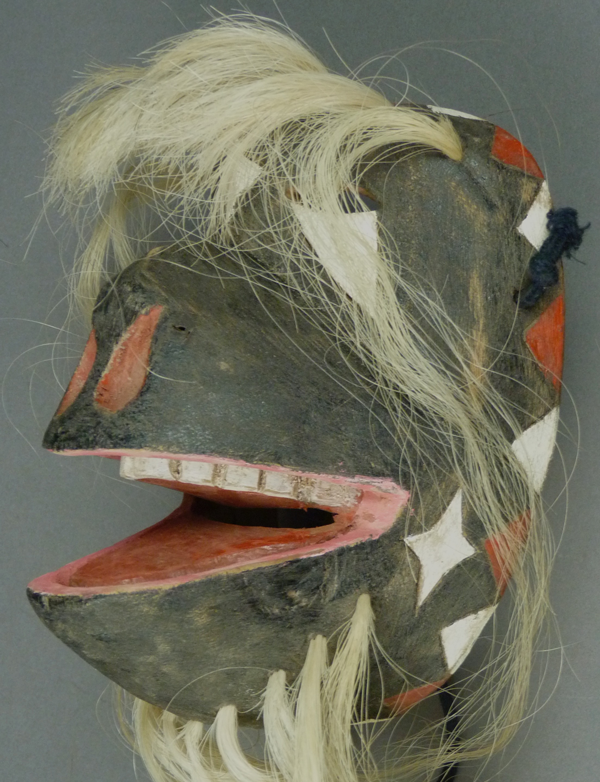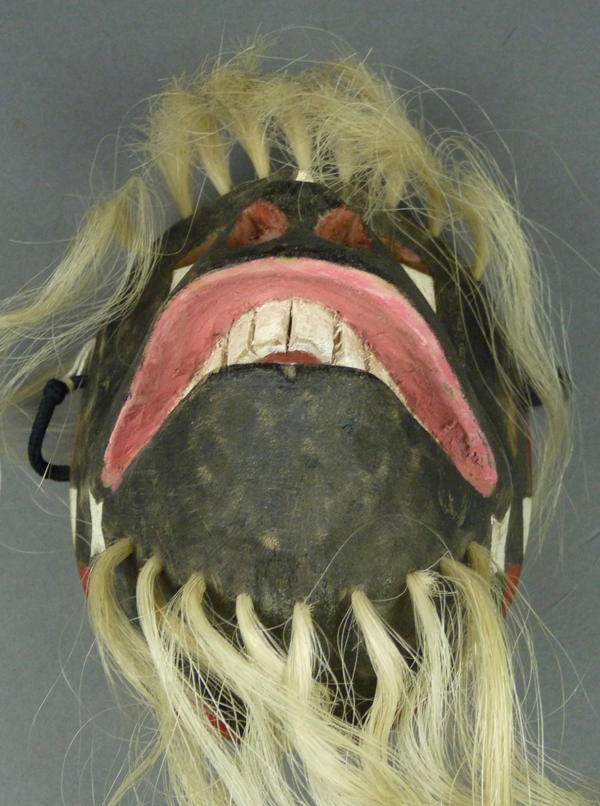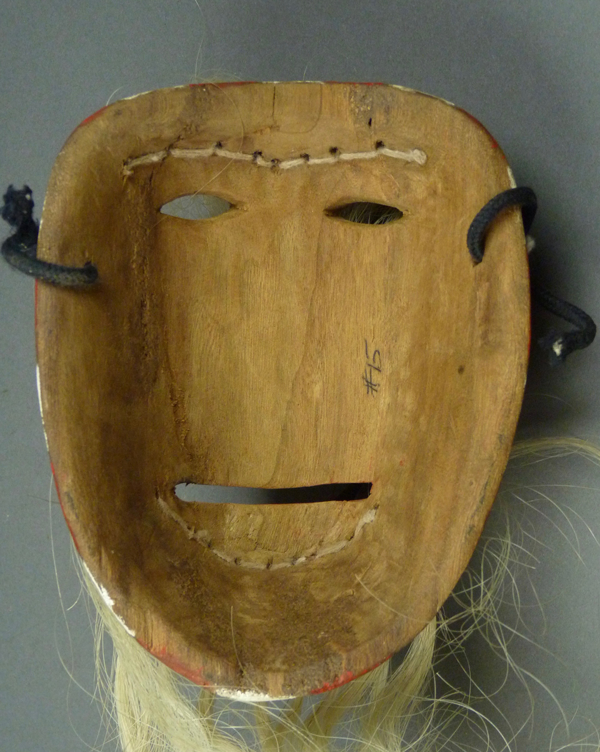This series of posts about Yoeme (Yaqui) Pascola masks began on July 4, 2016.
In this third post about the Pascola masks of Jesús Rodríguez Muñoz, I will show a few more of his danced masks, to expose you to some of his other design features and variations. The first of these masks, which was attributed to Jesús by his relatives, has a canine face that seems almost Cubist (and conical) in it’s shape and style. It was collected by Barney Burns and Mahina Drees in 2006 (B/M 100). As one finds frequently for this carver’s danced masks, there is no forehead cross.
This photo that follows illustrates what I mean by a “conical” shape.
We see a generous air passage through the open mouth.
This mask was danced for seven years, and is stained accordingly.
This second danced mask also has a canine form, but how different it is from the the one above. It was collected by Barney and Mahina in 2006 and it too was attributed to Jesús by his relatives (B/M 108).
This is another of the masks by Jesús with a conical shape.
This is a vigorous carving. From the side, one also notices that there is a scalloped border design across the top, but with a completely different border down the sides.
This sort of canine mask reminds one of Rodrigo Rodríguez Muñoz’s style, but we see the scalloped rim design of Jesús and there is no forehead cross.
This mask was danced for 7 years.
Here is yet a third version of a canine mask attributed to Jesús by the Rodríguez family. It was collected in about 2003 (B/M 189/187).
There is no forehead cross. We see yet another rim design. The white triangles under the eyes have three points instead of one; several weeks ago you saw a bat mask by Jesús that had triangles under the eyes with two points. On this mask we see Jesús using an eye design, with a vision slit on the lower edge of a painted eye, that I associate with the masks of his father, Preciliano Rodríguez Cupis.
The forehead is absolutely bare of any decoration. More generally, this mask is under-decorated, except for the rim design on the sides.
This is a handsome mask with an attractive patina.
There is staining to indicate that this mask was danced for several years.
The next mask has an appealing goat face. The triangles under the eyes have four points. This mask was collected by Barney and Mahina in 2005 as a mask by Jesús (B/M 336/329).
The goat’s horns are carved in relief, and the ears lie along the side of the face. There is an unusual design on the forehead, and this is certainly not a cross.
This mask looks so different from the front.
This mask lacks a ventilation channel.
The goat mask shows staining from heavy use. It was reportedly danced for 9 years.
In these posts about the masks of Jesús Rodríguez Muñoz, I have been exposing you to this artist’s design vocabulary. In the initial post, for example, I demonstrated his reliance on scalloped borders and his use of the morning star symbol as a decorative element. In several posts I have illustrated his preference to carve masks that have a conical shape. In today’s post I showed you a goat faced mask by Jesús that has an unusual symbol on the forehead as a substitute for the forehead cross. In this way I have prepared you to recognize a more unusual mask by Jesús as his, although it was attributed by the Rodríguez family to Felipe Álvarez. Here is that mask (B/M 342/336).
I suppose that this is a canine mask, although it presents an abstract version of a dog’s face. That being said, I am enamored of this face, and on seeing it I soon realized that it was probably carved by Jesús, given its shape. The design details support this new attribution. To begin with, this mask has a rim design that is typical of the Rodriguez carvers. Furthermore, the morning star symbol was prominently used by Jesús on the clown masks in an earlier post. But the most telling confirmation is the symbol on the forehead that stands in for the usual cross.
This V shaped symbol that meshes with the rim design is very similar to the one on the forehead of the appealing goat that we just examined. Scroll up and compare them. Such a symbol on a mask is very uncommon; as such it serves as a virtual signature for this artist.
The design of the back is consistent with this attribution to Jesús Rodríguez Muñoz.
I hope that you have enjoyed seeing the Pascola masks of Jesús Rodríguez Muñoz. Next week we will examine a variety of additional danced masks by this carver.

